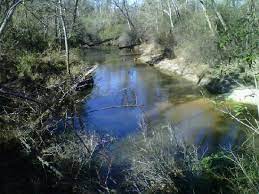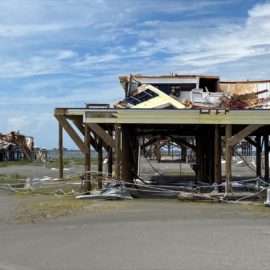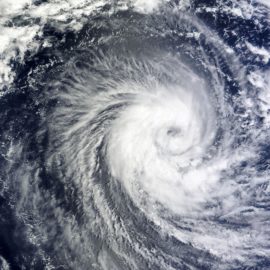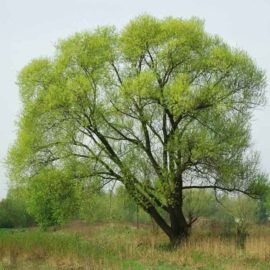
The Tchefuncte River was nerve cleaned up properly after Katrina making the clean up now harder.
Matt Allen says that the Tchefuncte River still bears scars from debris removal after Hurricane Katrina, an effort that he says was poorly handled following that monster 2005 storm. After Katrina, contractors cut a road down the riverbank, he said, destroying some his parent’s riverfront property west of Covington, including mature wild azaleas. “The erosion they caused made more trees go into the river than they took out,” he said. Now, Allen and some others are raising concerns about St. Tammany Parish government’s effort to clear Hurricane Ida debris from rivers and streams using $12.6 million in federal and local money. Allen, a retired teacher and certified flood plain manager, formed Northshore RiverWatch, a group of about 30 members that advocate for waterways in the Florida Parishes. He submitted a critical public comment on St. Tammany’s application with the state Department of Natural Resources and the Army Corps of Engineers for a permit to de-snag the Tchefuncte River and other St. Tammany waterways.
nola.com
Ida knocked down trees and put a lot of debris into the river.
Hurricane Ida toppled trees in the parish with a vengeance, and parish officials have said that debris in rivers and streams is adding to St. Tammany’s flooding and drainage problems. Parish President Mike Cooper said it’s important to address the issue as part of hurricane season preparations. In its coastal use permit application, the parish said multiple disasters have caused “massive amounts of snags, fallen trees and other flood debris restricting flow of these drainage canals.” A large amount of rain could be catastrophic, the application says. The St. Tammany Parish Council is set to vote next month on the 10% local match that’s required for the federal funds from the USDA’s Natural Resources Conservation Service and Emergency Watershed Program The matching funds and state and environmental permits are needed before work can begin. St. Tammany Parish government spokesperson Michael Vinsanau said that the parish is going through the emergency permit approval process, which has not yet been granted, and said that the general public has not yet been included, “as we are not at that stage yet.” When the parish reaches that point, he said, the public can weigh in, as required by law.
Allen disagrees with the Parish Counsel as he says they are not in an emergency role.
In his public comment, Allen said that St. Tammany hasn’t shown that there is an emergency. He recently took a pirogue down the Tchefuncte River and found four or five places in the six miles from the U.S. 190 bridge to Covington that he thought might need to be cleared. “It’s not as pervasive as people think,” he said. David Campell, president of the Little Tchefuncte River Association, said he took a kayak down the river after Hurricane Ida, and he didn’t see a big problem either. “How far north are you going to go? That’s lots of millions,” Campbell said of the federal money. “We’re not against clearing where clearing is really justified…up here, to the north, we want it to stay natural.” Allen is also worried about overkill, and wants assurances that the parish will work with landowners along the river. St. Tammany’s emergency permit application says that the parish is not the sole owner but one of the owners. But it doesn’t list who the others are on the long list of rivers and streams it wants to clear. “I view it as a land grab, because our deeds don’t have servitudes on them or anything,” Allen said. “The parish has never gone through the proper process of obtaining maintenance servitudes on them.”
The two sides are going to meet and they have found a joint concern.
Campbell said that Cooper has agreed to meet with him. But both Allen and Campbell worry about a future where St. Tammany’s scenic rivers, now protected by the state, could become straightened and channelized to appease flooding fears. Allen says parish officials want to seem like they are doing something to prevent flooding when the real answer is to stop large developments using tons of fill material in the parish’s flood plains. “I’m not going to stop this, I don’t expect to,” Allen said of the de-snagging. “I’d like to see a better project, more sensitive to the landowners. More sensitive to the environment.” Campbell agrees. “We need to learn to live with nature, not bend nature to our desire…A single tree across the river is nothing — that’s life, that’s nature. What they want to do is make it so clear that motorboats can go through.”
This is a perennial problem, development moves into nature and wants to tame it.



